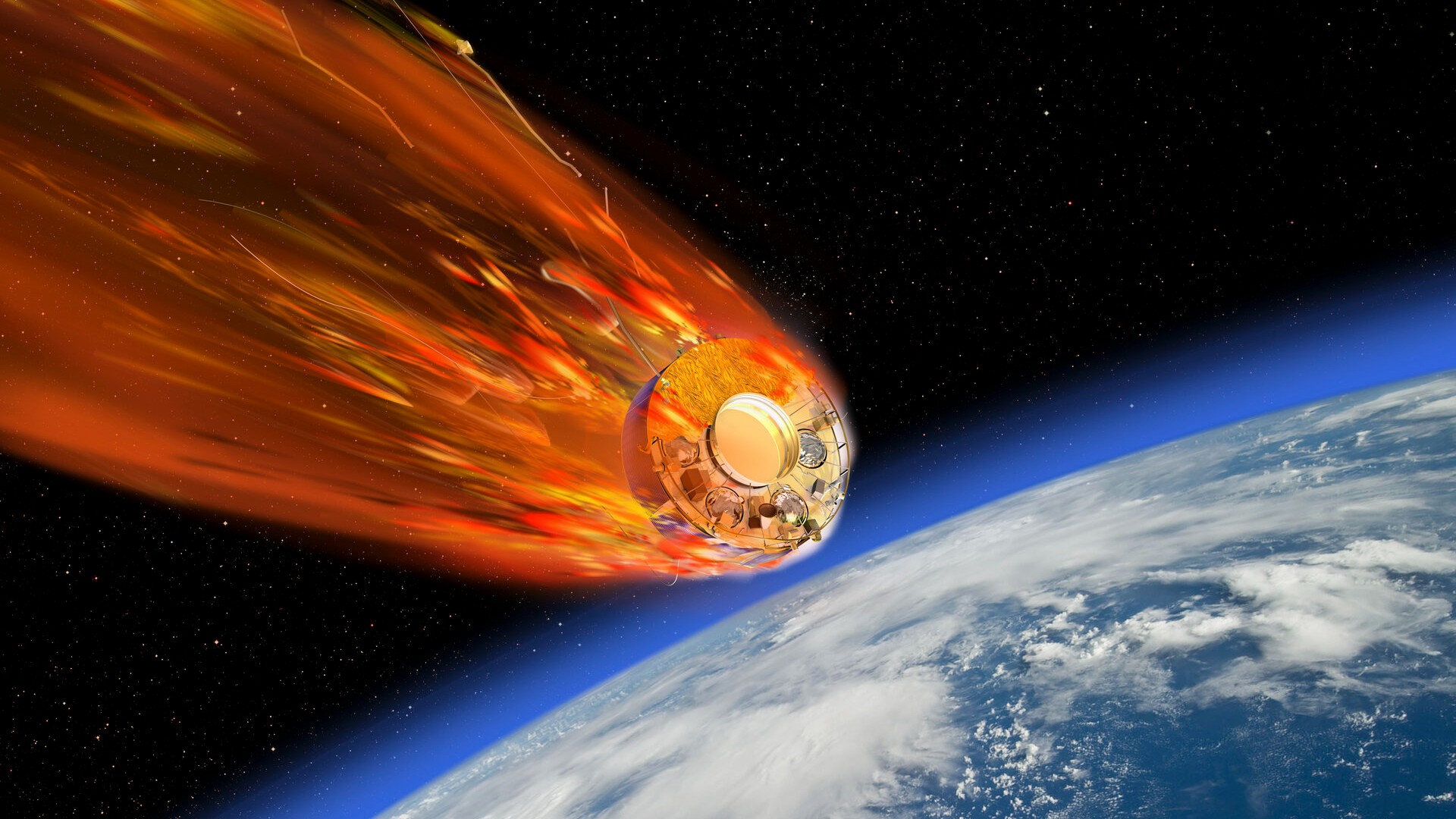
On Sept. 8, 2024, a satellite named Salsa will re-enter the atmosphere and burn up. What makes this re-entry different is that its operators have carefully guided it down from 81,250 miles (130,000 km) to burn up safely over a hand-picked region of the South Pacific — if all goes to plan.
Salsa will be the second satellite to meet its end in a planned and maneuvered "guided re-entry," following the reentry of ESA's Aeolus weather satellite last year. Such reentries could help satellite operators prevent debris from either floating in orbit or falling to Earth over unexpected and potentially populated areas.
Salsa is one member of a four-piece group called Cluster. Salsa's three companions are also named for dances: Rumba, Tango and Samba. Since 2000, the four identical satellites have been monitoring Earth's magnetic field. When Cluster first launched, its mission was intended to last just two years. Instead, its satellites are still intact and still sending back valuable scientific data nearly a quarter of a century later. Alas, Cluster's days are now numbered.
Had ESA retired Cluster in 2002 as scheduled, the four satellites might have been left to drift on their own. But the specter of rapidly accumulating space debris means that ESA wants to take a more careful approach with its old spacecraft. "By studying how Salsa burns up, which parts might survive, for how long and in what state, we will learn much about how to build 'zero-debris' satellites," said Tim Flohrer, head of ESA's Space Debris Office, in a statement.
More than just ensuring that old satellites do not pollute low Earth orbit, guiding a re-entry allows operators to more precisely control where defunct spacecraft fall to Earth.
Falling satellites are incredibly unlikely to actually cause damage or inflict injury — you're three times more likely to be struck by a meteorite than by a piece of satellite debris, according to the space agency. But ESA wants to minimize even that risk, hence why it is trying these new controlled reentries
Aeolus was the first test of ESA's new controlled reentry method. Over the course of weeks, Aeolus's operators carefully maneuvered the satellite from its old orbit at an altitude of 200 miles (320 km) down to 75 miles(120 km), low enough for Earth's atmosphere to drag it down to a fiery end. The exercise was carefully crafted to burn Aeolus up over the Atlantic.
What makes Salsa different from Aeolus is that Salsa has a far more eccentric orbit, swinging from just 60 miles up (100 km) to over 81,000 miles (130,000 km). In January, Salsa conducted a maneuver that will place its point of nearest approach to just 50 miles (80 km) sometime this month. This will guide Salsa to an end over a remote part of the South Pacific.
Following Salsa's re-entry, its three counterparts are also scheduled for similar fiery ends. Rumba will re-enter in 2025, followed by Tango and Samba in 2026. All four deaths are part of a great experiment — ESA hopes to observe identical spacecraft each burn up at a different angle.







